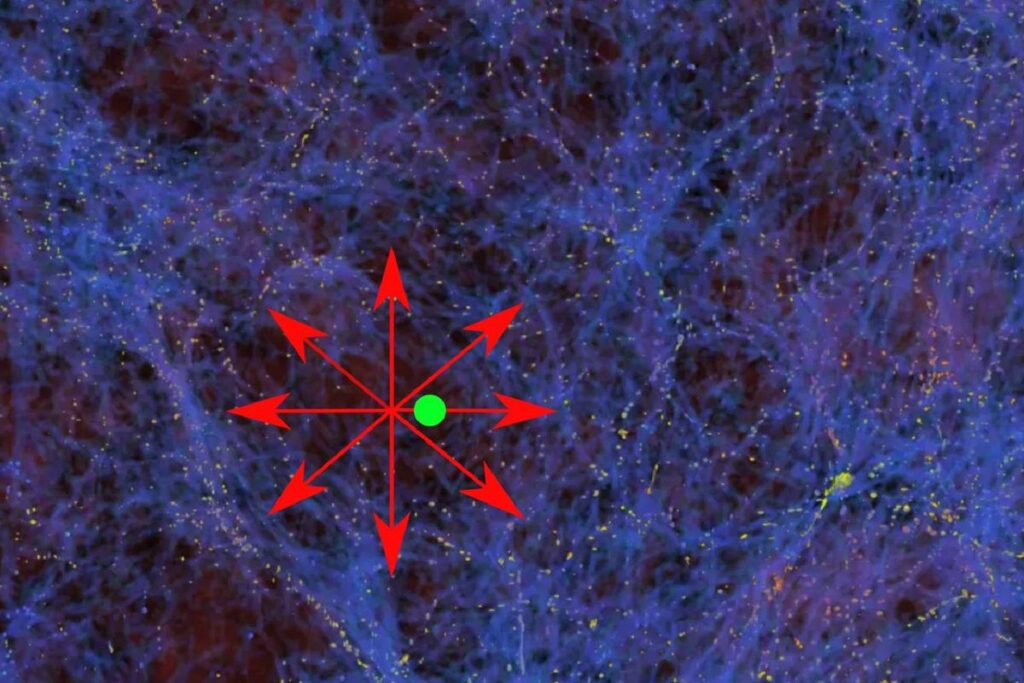For years, scientists have been saying that they the problem of Hubble tension or how the universe expands. But the calculation of the Hubble constant, the rate at which galaxies are moving away from each other due to the expansion of the universe, remains perplexing. Currently, there are two ways to calculate this value: early universe measurements and late universe measurements.
The confusion lies in the fact that these two approaches lead to different results. The difference is referred to as the Hubble tension. Making the Hubble tension disappear Researchers from the Universities of Bonn and St.
Andrews a novel solution that sees the use of an alternative gravity theory to extrapolate the constant that may just make the Hubble tension vanish. The new theory dictates that the forces that lead to galaxies moving away from each other could be influenced by the fact that Earth lies in a region of space where there is relatively little matter, explained by the researchers as comparable to an air bubble in a cake. This would mean that, around the bubble, the density of matter is higher resulting in gravitational forces originating from the surrounding matter and pulling the galaxies in the bubble towards the cavity’s boundaries.
“That’s why they are moving away from us faster than would actually be expected,” explained Dr. Indranil Banik from St. Andrews University.
This points to a local under-density, a region of space that has a lower density of matter compared to the average density of the universe, being responsible for deviations. This hypothesis is supported by another research group that recently calculated the average speed of several galaxies that are 600 million light years away from our planet. “It was found that these galaxies are moving away from us four times faster than the standard model of cosmology allows,” said Sergij Mazurenko from the Helmholtz Institute of Radiation and Nuclear Physics at the University of Bonn.
A limited model This is due to the fact that the standard model does not take into account such under-densities. Instead, it describes matter as spread evenly in space. However, if this theory were to be accurate, it would become impossible to explain which factors propel galaxies to such great speeds.
“The standard model is based on a theory of the nature of gravity put forward by Albert Einstein,” added Kroupa. “However, the gravitational forces may behave differently than Einstein expected. ” So the researchers substituted the standard model for the modified Newtonian dynamics (MOND) first theorized by physicist Dr.
Mordehai Milgrom four decades ago. In doing so, they discovered that if gravity behaved according to Milgrom’s assumptions, the Hubble tension would vanish and what would be left is just one single constant for the expansion of the universe. The study in The Λ cold dark matter (ΛCDM) standard cosmological model is in severe tension with several cosmological observations.
Foremost is the Hubble tension, which exceeds 5σ confidence. Galaxy number counts show the Keenan–Barger–Cowie (KBC) supervoid, a significant underdensity out to 300 Mpc that cannot be reconciled with ΛCDM cosmology. Haslbauer et al.
previously showed that a high local Hubble constant arises naturally due to gravitationally driven outflows from the observed KBC supervoid. The main prediction of this model is that peculiar velocities are typically much larger than expected in the ΛCDM framework. This agrees with the recent discovery by Watkins et al.
that galaxies in the CosmicFlows-4 catalogue have significantly faster bulk flows than expected in the ΛCDM model on scales of Mpc. The rising bulk flow curve is unexpected in standard cosmology, causing 4. 8σ tension at Mpc.
In this work, we determine what the semi-analytic void model of Haslbauer et al. predicts for the bulk flows on these scales. We find qualitative agreement with the observations, especially if our vantage point is chosen to match the observed bulk flow on a scale of Mpc.
This represents a highly non-trivial success of a previously published model that was not constrained by bulk flow measurements, but which was shown to solve the Hubble tension and explain the KBC void consistently with the peculiar velocity of the Local Group. Our results suggest that several cosmological tensions can be simultaneously resolved if structure grows more efficiently than in the ΛCDM paradigm on scales of tens to hundreds of Mpc. .
From: interestingengineering
URL: https://interestingengineering.com/science/hubble-tension-new-study-proposes-solution-to-great-cosmology-mystery
